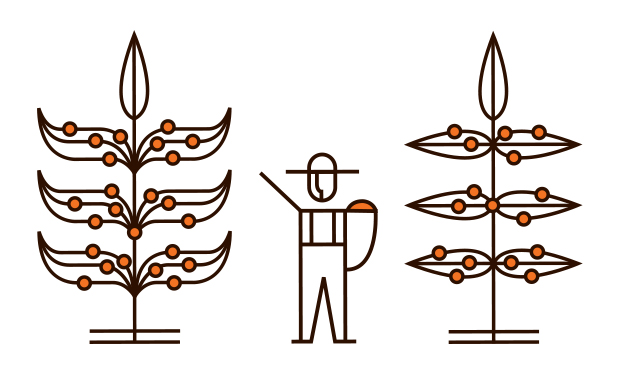
1. GROW
At the beginning of the story of each coffee cup, there was an extraordinary coffee berry. We can find it on two kinds of tropical plant.
Arabica
It represents two thirds of the world coffee market. This kind of coffee has more complex and balanced flavour and contains less caffeine.
Canephora coffee (Robusta)
It is climate resistant and less acidic. It has a smoky aroma and a bitter taste. This coffee was preferred to Arabica until 1800.
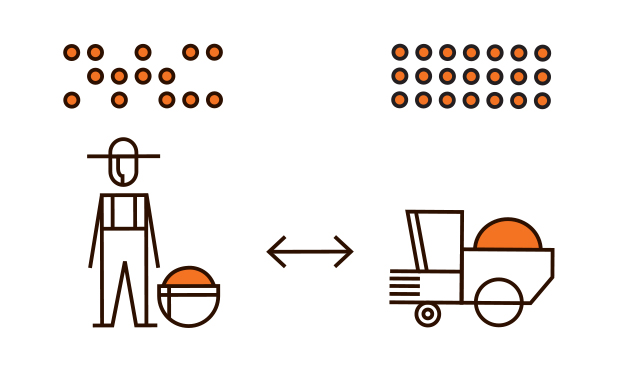
2. HARVESTING
Selective picking
The coffee berries are removed from plants five years after planting when berries grow from red to green color. During selective harvest, only grown berries are harvested.
Mechanical harvesting
Mechanical harvesting is used more often. The berries are cut together by mechanical harvester which moves through the rows.

3. PROCESSING
Coffee grains are extracted from coffee berry from which outer shell and inner pulp are removed. Two basic methods are used to extract coffee grains.
Dry processing
This is an older method where berries are dried naturally by sun. This method is slower, more demanding and more expensive, advantage is that the berries have a fuller body and less acidity.
Wet processing
This method needs a lot of water. Coffee berries are immersed into water, than usable ones float on surface. Then coffee beans are fermented, washed and finally dried. After that process coffee has lighter body and stronger aroma.
4.CLEANING

ShellingCoffee bean is preceded by peeling, where parchment peel is removed from their surface using peeling machines.

Cleaning and sortingCoffee grains are cleaned of last remains of flesh or peel and are sorted by size, density and colour.

EvaluationProcess of evaluating coffee beans according to their origin, size and quality.

Green coffeeResult of this whole process are dry coffee grains also known as green coffee..

Alternative stepsIf necessary, this process may be extended by several alternative steps.

PolishingCoffee grains are polished and even the smallest residue of peel is removed.
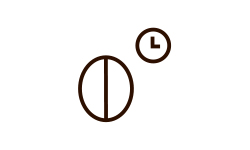
MaturationIs the last stage of grain character formation. The coffee bean matures to its final form.
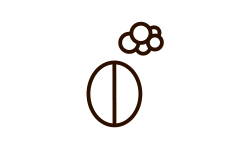
Removing caffeineThe best caffeine removing method in terms of health is considered Swiss “wet” method, where only water and a series of carbon devices are used to remove caffeine from coffee.
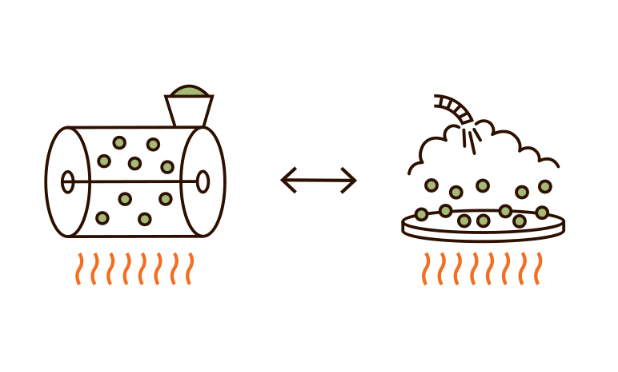
5. ROASTING
Drum roasting
Coffee grains are roasted in steel drums from 200 to 300° C, for approximately 10 – 15 minutes. Roasted grains are then placed on a cooling rack where they cool rapidly.
Hot air roasting
For most grains this method is used. Coffee beans are roasted at much higher temperatures for about 3 minutes. However, the result is more acidic taste of coffee beans.
Conversion of coffee beans
Certain chemical reactions inside each coffee grain during roasting turn grain into inflated, greasy, and tasty.
Chemical reactions take place chronologically:
– When grain breaks for the first time, water evaporates and starches are converted to sugars this is called Maillard reaction. – At the second burst of grain, caramelization occurs, when sugars decomposing (at temperatures above 150 ° C). Acidity of the grain is weakened and aromatic oils are formed inside
Roasted grain
The result is roasted grains that are ready for packaging.
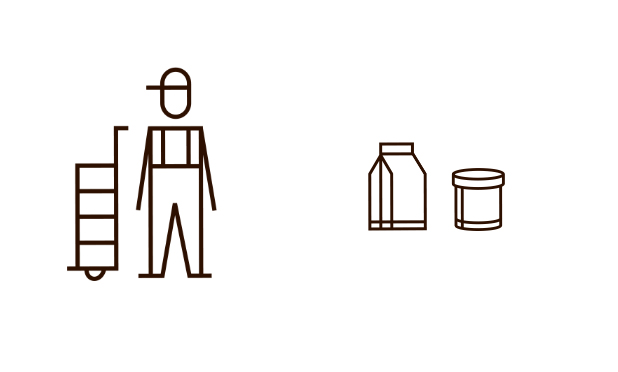
6.PACKING
Vacuum packs are used to get original coffee taste from manufacturer to you. Coffee beans are packed in cool, dark, dry and airtight containers.
7. TRANSPORT

WholesalerEach coffee pack begins its journey to you at wholesale store.

RetailerWill order necessary amount of coffee from a wholesaler and then it is a short way to your cup.

HouseholdCoffee grains have reached their destination and are ready for processing.
8.GRINDING

Burr-grindingIs the method, where coffee beans are ground using two grinding stones, is considered to be the best of these three methods. This method allows evenly grind coffee grains, resulting in better coffee flavour.
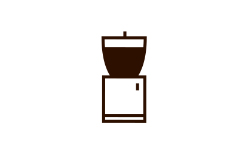
ChoppingThis method is not considered to be very suitable. Involves cutting coffee beans into pieces. Disadvantage is unevenness of the coffee grain pieces.

PoundingThis method is used in preparation of Turkish coffee, where the coffee beans are ground into fine powder. For very fine coffee grinding pounding grinder or mortar is used.

Ground coffeeResult is ground coffee, which is then subjected to one of many preparation ways
9. PREPARATION
It’s your choice which way of preparation you choose:

Open pot(Middle East, from 1600)
– Bitter taste, full body

Espresso(Italy, 1855)- Bitter taste, full body

Drip coffee (France, 1750) – strong taste, light body

Moka pot(Percolator) (France, 1800)- strong taste, light body

French press (France, 1750) – strong taste, light body

Piston coffee machine (Italy, 1929) – strong taste, middle body

Piston coffee machine (Italy, 1929) – strong taste, middle body

10. DRINKING
And finally the best. We believe that thanks to the story we shared together, you will appreciate every cup of coffee even more and enjoy its unique taste.
Coffee is ready,
here you go,
Enjoy yourself!
WWW.EUROSAM.SK

